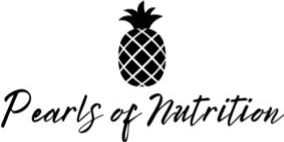Soup is good. It has lots of vegetables, herbs and spices, and water to keep you hydrated (and warm in this absurd weather we’re having). So why have I named this article Chemicals in a Can? Let’s look at the ingredient list…
Progresso® Rich & Hearty Chicken & Homestyle Noodles
Ingredients: Chicken Broth, Cooked White Chicken Meat, Carrots, Egg Noodle (semolina wheat, egg*), Celery. Contains less than 2% of: Water, Modified Food Starch, Salt, Chicken Fat, Egg White*, Carrot Puree, Maltodextrin, Potassium Chloride, Yeast Extract, Sugar, Soy Protein Isolate, Sodium Phosphate, Chicken Skin, Onion Powder, Chives*, Spice, Chicken*, Parsley*, Natural Flavor, Invert Sugar, Beta Carotene (color), Barley Extract.*Dried
Are there things you don’t recognize in that list? Samesies, and I do this all day errryday. Why, for example, would you need yeast extract in soup? The bakers among us know that yeast is used to make bread rise. Why the shit is that necessary in soup?
[insert dramatic music]
BECAUSE IT’S HIDDEN MSG!
MSG is monosodium glutamate, the sodium salt of a naturally occurring amino acid. Amino acids found in real foods are combined with other nutrients that are easily assimilated into the body without causing a ruckus. Individual amino acids, however, can have a neurostimulatory effect which can lead to nerve damage. MSG can cause headache, numbness, flushing, tingling, palpitations, and drowsiness (and that is straight from the FDA’s website yet apparently they still think it’s okay to eat, makes sense #sarcasm). MSG actually does occur naturally in: hydrolyzed vegetable protein, autolyzed yeast, hydrolyzed yeast, yeast extract, soy extract, and protein isolates. So by adding “yeast extract” to their label manufacturers can get away with adding MSG to their soup without the average customer knowing. Fun fact: If a label says “natural flavors” it could be (and likely is) referring to something like yeast extract, i.e. MSG.
I actually tried to get a Campbell’s® ingredients list too but this is what happened when I tried to find it on their website:
Weird and sneaky ingredients like “yeast extract” aren’t the only problem with canned soups. In addition to the soup being full of chemicals we also have absolutely no idea where the ingredients came from. Was the stock made with collagen rich bone broth? Who knows. Was the meat grass fed? Probably not. Are the ingredients organic and local? No shot. Were those non-local, non-organic vegetables even harvested this year? Sadly, doubtful. Were they close to rotting so they were chopped up and thrown in a chemically laden soup to mask the flavor? Possibly. And if the soup contains wheat, corn, or soy it has the added bonus of Genetically Modified Organisms (GMOs). At this point you can see that canned soup is not really a food, nor will it nourish your body the way a homemade soup will.
If that wasn’t enough for you I should also probably add that the lining of the can was sprayed with a chemical which includes BPA. BPA is a synthetic chemical which can mimic estrogen and act as an endocrine disruptor. Moms need to be particularly cautious of this as BPA has the most detrimental effects during early developmental stages. Some studies have linked prenatal exposure to later physical and neurological difficulties. So let’s move away from buying things in a can and start cooking food, REAL food, ourselves.
Try these soup recipes and don’t forget to use your homemade bone stock!
Vegetable Soup (omit corn)
Sausage, Kale, and White Bean Soup (use grass fed sausage and prepared dried beans)
Ham and Split Pea Soup (use grass fed)
Garlic Cauliflower Soup
Bacon Butternut Squash Soup (YES)
Thanks for the question, keep ’em coming! 🙂

